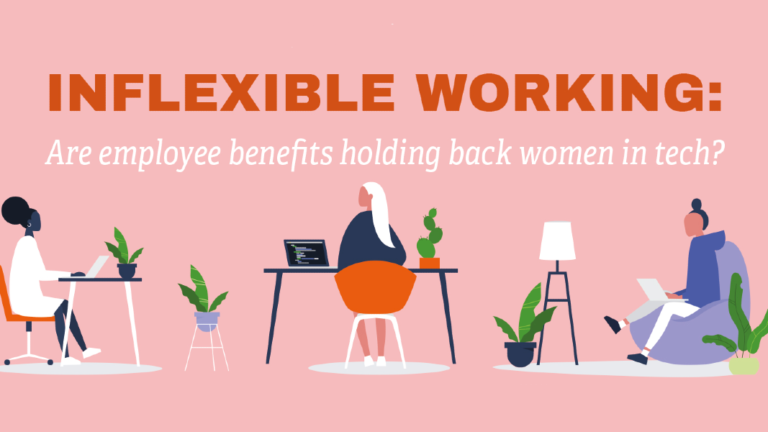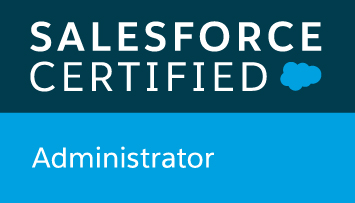New research: Salesforce employers should look towards their benefits package to improve gender representation
Mason Frank’s latest salary survey has found differences in entitlement to employment benefits across the genders, and these findings are now being discussed as part of the wider issue of gender representation in the tech sector.
Salesforce is one of the most forward-moving ecosystems in the world both technologically and culturally, and on several occasions has taken steps to address gender parity both internally and across the industry generally.
Since revealing a six million dollar discrepancy between male and female pay in 2015, Salesforce has invested millions into closing the pay gap internally. The company has also championed diversity and
inclusivity initiatives through its partner and customer ecosystems to educate the sector on the challenges women face professionally.
Salesforce’s latest equality data shows that women account for 33% of its employees, but only 23.5% of the tech roles at Salesforce are populated by women; this is consistent with other tech giants such as Twitter (21%) and Google (23%).
Attitudes and entitlement to flexible working
Each year, Mason Frank conducts an annual independent Salesforce market survey to benchmark salaries, product trends, and culture in the ecosystem. While professionals and employers often use these market insights to steer their projects, their data is also really useful for comparing sentiments across different segments of respondents, such as by country, job role, technology, or even gender.
When analyzing the data around employment benefits, they found differences in both desired employment benefits, and actual entitlement to employment benefits between the genders.
In the survey of 2,500+ Salesforce professionals, of which 30% were female, 22% of women indicated home and flexible working were important to them, compared to only 19% of men. Men tended to prefer financial and performance-based incentives, while women chose benefits that typically improve work-life balance.
Access to these would even influence a woman accepting a job offer, with 24% indicating flexible working hours were important to them, and 39% feeling the same about home working.
Despite women having a greater desire for these employment benefits, fewer women had actual access to them than men. Only 58% of women reported that they were able to work from home, compared to 64% of men, and the difference was even greater when looking at flexible working, where 54% of men had access to it compared to just 42% of women.
How benefits are essential in improving work-life balance
It’s disappointing to see a difference in entitlement to benefits, but this is particularly concerning giving the differences in work-life balance between men and women. Research has shown that female professionals can perform up to 60% additional unpaid work a week on housekeeping and caregiver duties, which can put a major strain on their professional life. With burnout being so prevalent in the tech sector, even more so among women, flexible working could really alleviate some of this pressure.
I think while we’ve spent a lot of time and energy on trying to treat men and women as equals, we’ve failed to recognize that there are actually key differences in how work fits into our lives, which may call for additional support for those who need it. We’re also hindered by an apparent flexibility stigma, which is discouraging staff from making flexible working requests and heaping the anxiety on those who do.
In a 2018 study by the University of Kent, 39% of survey respondents associated negative outcomes with a colleague working flexibly, while 39% of those who had worked flexibly reported a negative outcome as a result of it! Interestingly, working mothers were the largest segment who’d felt this
stigma.
So while a woman in tech would be more likely to accept or stay in a job role if flexible or remote working was on offer, not only is their entitlement to these benefits lower on average than that of men, but negative sentiments towards those who do work flexibly is having an adverse impact on achieving that work-life balance. It’s no wonder that attraction and retention of female talent is an issue in the tech sector.
Changing the culture of employment benefits
Clearly this is a complex issue without a quick fix. We need to move towards a system where we offer employment benefits to all staff, ensuring they have equal entitlement regardless of background or gender, and encouraging them to lean on the benefit that will optimize their performance.
If we can have open conversations with team members, discussing available benefits, appropriate times to use them, and why they exist, this can go a long way in changing the culture of employment benefits in the wider tech sector as well as in the Salesforce ecosystem. Measuring and celebrating the success of these benefits will truly entrench their value over time.
Have you experienced these discrepancies? What are your experiences or thoughts on the issue of gender representation? Open conversations are the best way to bring change, so please comment below.





